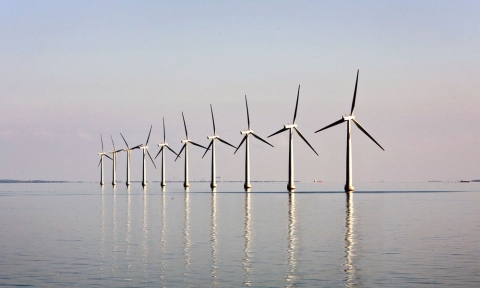
From 25th to 27 septembre 2017, will take place the workshop "Use of coastal and estuarine food web models in politics and management: The need for an entire ecosystem approach to prevent crises" organised by the Alfred Wegener Institute de Sylt (Allemagne).
Nathalie Niquil, research director CNRS at University of Caen, UMR BOREA, is invited and will speack about:
A history of functioning indicators proposed to OSPAR illustrated with the case study of the offshore wind farm in the Bay of Seine. What is next: connecting ecological and social network analyses?
Nathalie Niquil 1, Aurore Raoux 1,2, Georges Safi 1, Ghassen Halouani 1, Valérie David 3, Jean-Claude Dauvin 2, Camille Mazé 4
1 CNRS/University of Caen Normandy, UMR BOREA, 14032 Caen, France
2 CNRS/University of Caen Normandy, UMR M2C, 14032 Caen, France
3 CNRS/University of Bordeaux, UMR EPOC, 33400 Talence, France
4 CNRS/UBO/IUEM, UMR LEMAR, APOLIMER, 29280 Plouzané, France
Astract:
Since 2011, we have been in a process of proposing to OSPAR, holistic and functional indicators to describe ecosystem health, for implementing the MSFD “food web” descriptor. The “mean trophic level” is today accepted in the list of common indicators for the next intermediate assessment. Other ENA indicators are also in the list of the indicators that are still under development. These were proposed to OSPAR, in order to open a window on the on-going research in functional marine ecology. We had hence the opportunity to show managers the difficulties encountered when trying to connect ecological theories with observations, and to disentangle causes and effects in complex systems like marine food webs. We will illustrate such research with the case study of the Bay of Seine, were we modelled the possible impacts associated with the scheduled building of an offshore wind farm. An Ecopath with Ecosim model of the food web at the site of the construction was built allowing to test the reef- and reserve- effects and to investigate the contribution of ENA indices in the assessment of ecosystem health state. After the installation of the wind farm, the ecosystem appears to be more mature according to Odum’s ecological theories and still in a healthy state, but with a lowering of the mean trophic level. To go further in the integration of these results, we proposed to enlarge the description of the ecosystem functioning from a local (zero D) to a spatial (2D) view of the extended Bay of Seine using Ecospace. Then, the next step will be to propose the junction of ecosystem and social network analysis, with the objectives of 1) to reconstruct the decision-making process with a focus on actors, institutions and networks involved in the process, 2) defining how the results of ecosystem models are taken into account in this network of human interactions and 3) joining these two types of networks into a common modelling effort of this socio-ecosystem. In such a model, the nodes are the main trophic groups forming the ecosystem and the main actors, influencing this ecosystem. Our approach consists in contribution to sustainable development by a better understanding of conflicting interests and perceptions between actors (e.g. energy producers, fishermen, conservation associations).
